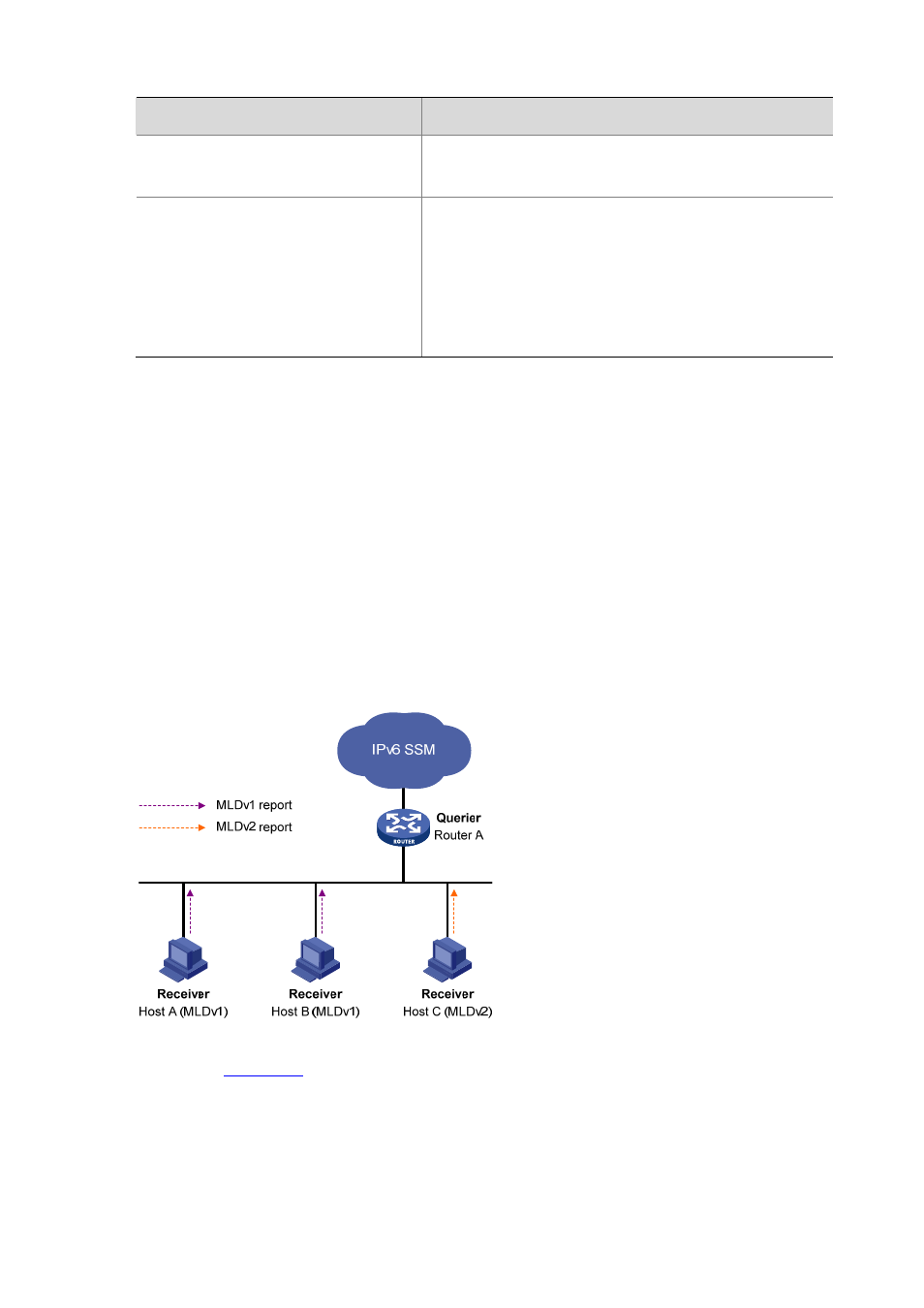Mld ssm mapping – H3C Technologies H3C S7500E Series Switches User Manual
Page 328

12-8
Field
Description
Number of Multicast Address Records
This field indicates how many IPv6 multicast address records
are present in this report message.
Multicast Address Record(i)
This field represents information of each IPv6 multicast address
the host listens to on the interface from which the report
message is sent, including record type, IPv6 multicast address,
and IPv6 multicast source address on the sender (i= 1, 2, ... m,
where m represents the number of IPv6 multicast address
records).
MLD SSM Mapping
The MLD SSM mapping feature allows you to configure static MLD SSM mappings on the last hop
router to provide SSM support for receiver hosts running MLDv1. The SSM model assumes that the
last hop router is aware of the desired IPv6 multicast sources when receivers join IPv6 multicast
groups.
z
When a host running MLDv2 joins a multicast group, it can explicitly specify one or more multicast
sources in its MLDv2 report.
z
A host running MLDv1, however, cannot specify multicast source addresses in its MLDv1 report.
In this case, you need to configure the MLD SSM mapping feature to translate the (*, G)
information in the MLDv1 report into (G, INCLUDE, (S1, S2...)) information.
Figure 12-5 Network diagram for MLD SSM mapping
As shown in
, on an IPv6 SSM network, Host A and Host B are running MLDv1 and Host C
is running MLDv2. To provide SSM service for all the hosts while it is infeasible to run MLDv2 on Host
A and Host B, you need to configure the MLD SSM mapping feature on Router A.
With the MLD SSM mapping feature configured, when Router A receives an MLDv1 report, it checks
the IPv6 multicast group address G carried in the message: